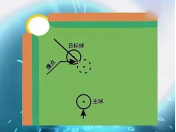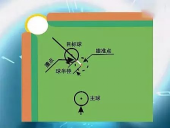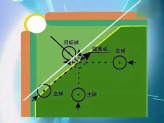When it comes to how to aim in billiards, the most commonly used method for both novices and experts is, of course: relying on feeling! For novices, relying on feeling mostly means taking a wild guess; while experts, through long-term experience accumulation, have developed a reliable sense for balls at various angles, so their accuracy is often very high. However, feeling is not always reliable. Friends who often watch snooker matches may find that those professional masters can maintain a high level of accuracy even when they are not in good form or don’t have a good “touch”. Old hands like Higgins can sometimes win a match even when they are in a poor state. Do they must have mastered some advanced aiming methods? Today, we will introduce a scientific aiming method: the Overlap Proportion Method. It is said that those who learn this aiming method will experience a qualitative leap in their accuracy. Just like Linghu Chong who learned the Dugu Nine Swords, even when he loses all his internal strength, he can still defeat his opponent in an instant.
1. The Basic Principle of Aiming
To understand this aiming method, of course, we must first understand the basic principle of billiards aiming:

As shown in the figure, draw a straight line through the center point of the pocket and the center point of the object ball. The intersection of this straight line and the outer circle of the object ball is the contact point (the point for scoring). After the white ball (the cue ball) accurately hits this point, the ball can be pocketed.
But in actual playing, this contact point is not the aiming point for aiming at the ball:

As shown in the figure, extend vertically backward from the contact point by half the length of the ball, and you can get the position of the center of the cue ball when the cue ball hits the object ball. The point where this center of the ball is located is the aiming point. (That is to say, when actually aiming at the ball, the aiming point does not fall on the object ball.)
When the aiming point of the cue ball, the contact point of the object ball, and the center point of the pocket are on the same straight line, hitting the center point of the cue ball can easily pocket the ball. This is the basic principle of billiards aiming: three points in a line.

As shown in the figure, according to the principle of three points in a line, draw a straight line perpendicular to the scoring line at the aiming point. Within the 180° range on the right side of this straight line (the yellow line in the figure), as long as the aiming point is accurate, theoretically, the ball can be pocketed. (Note: It is not the white line drawn along the contact point of the object ball as is commonly thought.)
Understanding this scoring principle does not necessarily improve accuracy well. Because the aiming point is an imaginary point, to find its position skillfully, a certain amount of spatial imagination is required. Moreover, when you lie down to hit the ball, both the contact point and the aiming point are blocked from view by the white ball, so you can’t hit the ball accurately.
Spike Billiard Table, directly sold by the original manufacturer, starts a cost-effective shopping journey. We directly deliver the product to your home, allowing you to enjoy a convenient shopping experience. https://www.tiktok.com/@spk.billiard?_t=8qRRRnXP4N8&_r=1
